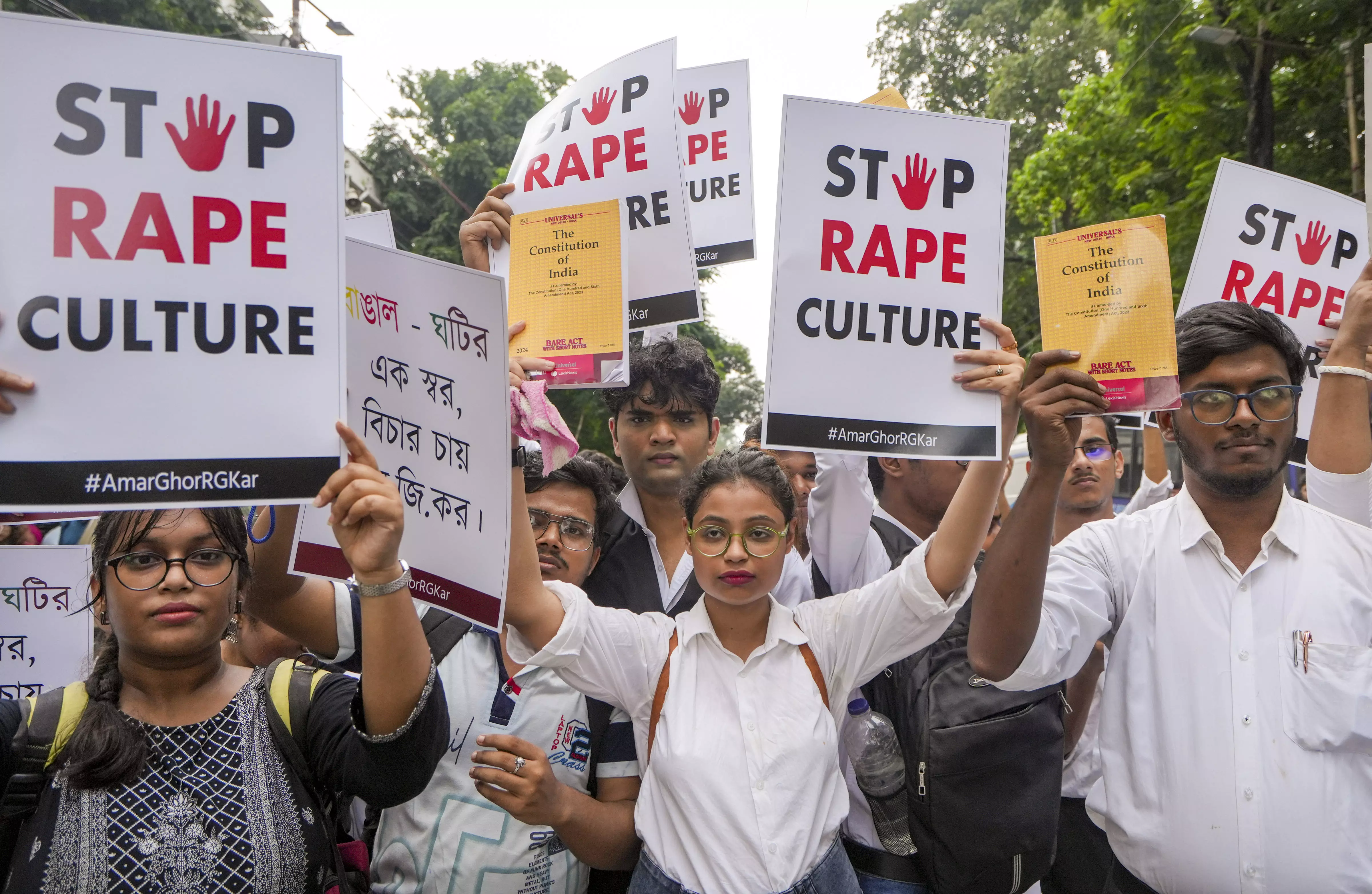Anita Anand | Can a ‘bottom-up’ approach help in tackling crimes targeting women?

The gruesome rape and murder of a 31-year-old trainee doctor at the R.G. Kar Medical College and Hospital in Kolkata on August 9 has met with an outcry in the city and across most parts of the country.
Following the incident, doctors and medical institutions went on strike, providing only emergency and OPD services, and raising concerns about the safety of the medical staff. The Indian Medical Association (IMA) asked Union health minister J.P. Nadda to introduce a special Central law to prevent violence against doctors and to designate hospitals as safe zones.
On August 15, demonstrators at R.G. Kar Medical College pushed past a police barricade, entered the hospital, throwing stones, and began to vandalise the emergency ward and the area where the victim was found. The Kolkata police commissioner put the blame for the incident on the “malicious media campaign” against the police. Public anger is targeted at the state government headed by chief minister Mamata Banerjee and the police.
The horrific incident in Kolkata brings back memories of the 2012 Delhi gangrape and murder incident, commonly known as the “Nirbhaya” case, in which a 22-year-old physiotherapy intern was gangraped and tortured on a moving private bus while travelling with her male friend. The then all-India protests had demanded stronger penalties for rape and murder of women and more safety measures for women in public spaces.
The government responded with the passage of several new sexual assault laws, a mandatory minimum sentence of 20 years for gangrape, and six new fast-track courts solely for rape prosecutions. The complexity of rape prosecutions is evident in that the “Nirbhaya” case was the only conviction among the 706 rape cases filed in New Delhi in 2012. So much for the implementation of the law.
But, the “Nirbhaya” case may have nudged rape or molestation victims to report the crime. Police records show that during the last quarter of 2013, twice as many rape victims filed a police report, and four times as many allegations of molestation. This is progress.
After Nirbhaya, the government set up the “Nirbhaya Fund” for “empowerment, safety and security of women and girl children”. Under the fund, one of the schemes was the One Stop Centre (OSC) Scheme, offering multiple services to women, to be implemented across the country as of April 1, 2015.
The progress of the OSCs has been predictable. A 2023 study by the Mumbai-based non-profit IndiaSpend of the OSC scheme found that after seven years, despite having the potential to help thousands of women, the use of funding, and lack of support from the ecosystem are obstacles to the scheme’s implementation. Less than half of the funds from the Union government were utilised between 2015 and 2022; there was no integration between systems such as the Women’s Helpline; and a general lack of awareness among stakeholders such as the police.
According to the 2023 Lok Sabha data, 733 OSCs were operational in 729 districts; over Rs 735 crores of the Rs 868 crores in approved funds were released to the districts, of which Rs 328 crores has been utilised on the ground and over half the funds appearing as actual expenditure lies in the bank accounts of district collectors or magistrates. This is typical of many other government schemes as well.
The 2014 BJP election campaign promised to reduce crimes against women. Since then, such crimes have risen, according to data from the National Crime Records Bureau. In his Independence Day speech in August 2024, Prime Minister Narendra Modi said: “There is public outrage over atrocities against our mothers and sisters. I feel this outrage. The country, our society, and our state governments need to take this seriously. Crimes against women must be probed as soon as possible, and those involved in such monstrous acts must face strict punishment at the earliest, this is necessary to create faith in society. There is anger among the people because of this. I can feel that rage.”
Anger, rage and calls for punishment are there, but what after that? The demonstrators who invaded R.G. Kar Hospital destroyed property and injured people.
Striking medical professionals put public lives at risk. Is this kind of protest useful? It seems that it’s the only way the public gets the attention of the government. The Nirbhaya and the R.G. Kar Hospital cases are due to a failure of governance, a breakdown in law and order, corruption, and a lack of accountability of institutions.
So, what is to be done? Noam Shpancer, professor of psychology at Otterbein University in Westerville, Ohio, suggests that sexual violence is deeply intertwined in our biological and psychological makeup shaped by an interplay of biological, psychological, circumstantial and socio-cultural variables. There are two ways to address the issue: a top-down approach and a bottom-up approach.
A top-down theory he suggests, is applied through changes in regulations or laws. However, in India, changes in laws have not deterred the perpetrators of sexual violence. Law enforcement is based on punishing those who break laws. The psychologist B.F. Skinner suggests that punishment only teaches what not to do. A bottom-up approach, Prof. Shpancer suggests, is where individuals, families and communities initiate actions and conversations to create new terms, new scripts and expectations, and a new social consciousness. And a special focus on consciousness-raising groups, especially for men.
It is the bottom-up approach that must be cultivated in tackling crimes against women. This starts in the home, in educational and religious institutions, in workplaces and businesses, and in the government. Till now, little of this has been attempted.
Expecting only the government or laws to fix the problem is like whistling in the wind.
